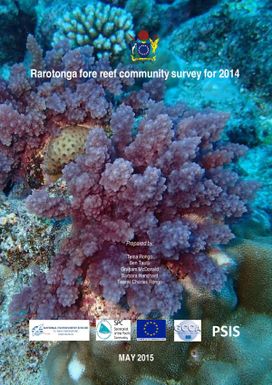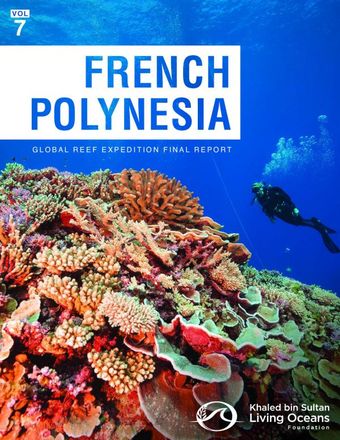Rarotonga fore reef community survey for 2014
- Description:
- Coral reef monitoring on Rarotonga has been ongoing for around20 years, with surveys conducted in 1994, 1999, 2000, 2003, 2006, 2009, 2011, and this present survey in 2014. Results from these surveys showed that the crown-of-thorns starfish (COTS) outbreak that occurred from 1995 to 2001,and to a lesser extent storm surge associated with the 2003 to 2005 cyclone sand several coral bleaching events, were the main causes of the degraded state of Rarotonga's fore reef communities for much of the 2000s. While the 2006 survey indicated that mean hard coral cover for all sites were around 1%, it was noted that conditions were set for recovery to occur. Mean coral cover was around 5%in 2009, around 8% in 2011, and 16% in 2014, which clearly showed that coral communities on the fore reef has been recovering since 2006.In support, coral size class data also showed a significant increase of larger colonies in 2014 when compared with 2006.
- Display date:
- 2014
- Collections:
- Secretariat of the Pacific Regional Environment Programme (SPREP)
- Publisher:
- Cook Islands National Environment Service (CIES), Secretariat of the Pacific Community (SPC)
- Content partner:
- Secretariat of the Pacific Regional Environment Programme (SPREP)
- Availability:
- Not specified
-
Copyright status: All rights reservedFind out more about what you are able to do with this itemThis item is all rights reserved, with means you'll have to get permission from Secretariat of the Pacific Regional Environment Programme (SPREP) before using it. For more information, please see our use and reuse page.What can I do with this item?Non-infringing useNZ copyright law does not prevent every use of a copyright work, and this item may be hosted by an international institute or organisation. You should consider what you can and cannot do with a copyright work.No sharingYou may not copy and/or share this item with others without further permission. This includes posting it on your blog, using it in a presentation, or any other public use.No modifyingYou are not allowed to adapt or remix this item into any other works.No commercial useYou may not use this item commercially.
Related items
Welcome and warm Pasifik greetings
The information on this site has been gathered from our content partners.
The names, terms, and labels that we present on the site may contain images or voices of deceased persons and may also reflect the bias, norms, and perspective of the period of time in which they were created. We accept that these may not be appropriate today.
If you have any concerns or questions about an item, please contact us.


